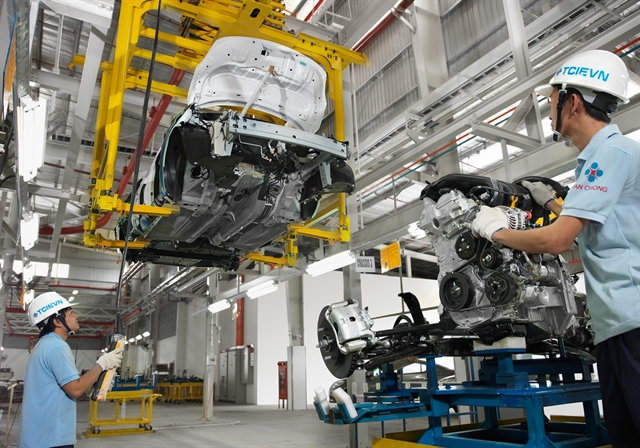The Vietnamese supporting industry currently meets only 10 per cent of the demand for domestic production and consumption.

HÀ NỘI — The number of businesses operating in the supporting industry is still very small, accounting for only about 0.2 per cent of the nearly 900,000 Vietnamese enterprises, according to the Hanoi Supporting Industries Business Association (Hansiba).
Great potential for development
Việt Nam has spent billions of US dollars importing components from abroad every year to support domestic production activities, according to Hansiba chairman Nguyễn Hoàng.
This not only wastes foreign currency, but also highlights the country's considerable dependence on global supply chains, which poses many risks.
Hoàng explained that in the context of global economic integration, the involvement of Vietnamese businesses in supply chains — especially those with foreign direct investment (FDI) — would be a key factor for the development of the domestic supporting industry.
"However, FDI enterprises tend to limit support for Vietnamese businesses hoping to engage more deeply in their value chains," he said.
Another major challenge is that the competitive capacity of Vietnamese enterprises is still quite low, as they have often not yet met the stringent requirements for quality, technology and management in global supply chains.
The Vietnamese supporting industry currently meets only 10 per cent of the demand for domestic production and consumption, according to Vũ Bá Phú, director of the Ministry of Industry and Trade's Trade Promotion Agency.
The main reason is that domestic firms' competitive capacity and ability to meet the requirements of businesses are still limited.
The Thời Báo Ngân Hàng (Banking Times) quoted Haruhiko Ozasa, Chief Representative of the Japan External Trade Organisation (JETRO) in Hà Nội, as saying that the overall localisation rate currently stands at 36.6 per cent, including for both Vietnamese and Japanese enterprises investing in Việt Nam.
But when considering only Vietnamese businesses, this figure is just 15.7 per cent.
This indicates that Việt Nam still has great potential to develop its supporting industry, according to Ozasa.
Resolving bottlenecks
The Vietnamese Government has been actively implementing many policies and programmes aimed at developing the supporting industry.
Its ambitious goal is to meet 45 per cent of domestic production and consumption needs by 2030, while contributing 25 per cent to the country’s total export value.
To achieve this, Phú said that developing the supporting industry would require a comprehensive strategy, including proactive sourcing of raw materials, reviewing and improving mechanisms and policies, and ensuring that regulations are in line with international trade commitments that Việt Nam has made.
Phú believes that as the Government is working to create a favourable legal framework, the proactive involvement of businesses will become a decisive factor for the development of the supporting industry.
Resolution 68 has opened up a broad space for businesses, especially private enterprises and small and medium-sized enterprises, to promote the application of digital technology to enhance their competitiveness.
Businesses will be able to boost their scientific and technological capacity, expand production and ensure the supply of high-quality raw materials, contributing to realising goals set for the support industry.
Enterprises needed to actively grasp international market trends, he said. In addition, they must transition to management models and internal control systems based on international standards.
This is essential to meet the growing demands of foreign partners, thereby raising the position of Vietnamese enterprises in global supply chains and fully leveraging opportunities to elevate the Vietnamese support industry to an international level, according to the director. — VNS





